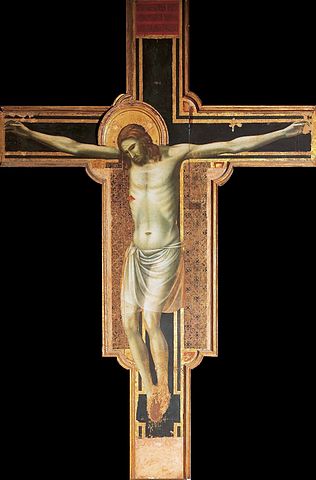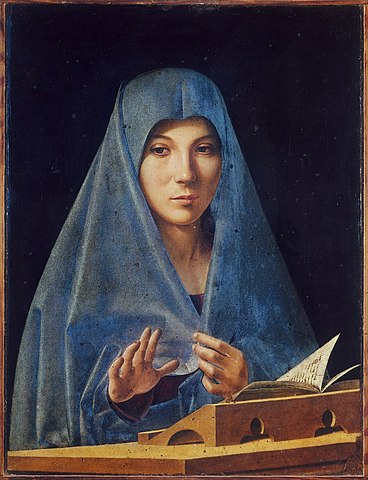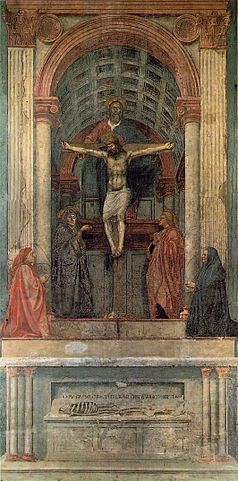 |
||||
|
Exploring the Origins of Renaissance ArtThe Renaissance was a feverish period of intellectual, philosophical, political and economic evolution that took 15 th Century Europe by storm. Renaissance Art - the paintings, sculptures and architecture, represents the visual aspects of the period's intellectual explosions. These new ideas did not spring forth from whole cloth despite the preceding epoch having been so brutal. Roughly 1000 years passed between the fall of the Roman Empire and the 'rebirth' of harmonious society. These Middle Ages were marked by war, persecution, pestilence and death at every turn. Thus, it comes as no surprise that people would pivot away from death and oppression to find ways to improve human life. Along the way, they embraced all that's beautiful, good and right about the human experience. With new technologies at their disposal, thinkers and artists wasted no time exploring new concepts.
Renaissance: A Misleading NameThe word 'renaissance' is French for 'rebirth'; attaching it to this era fosters two incorrect ideas. The first is that this movement originated in France and the second, that it eschewed everything that came before it, including artistic themes and concepts from the Middle Ages. The earliest moves toward Renaissance art date back to the late 13 th Century. Florentine painter Giotto di Bondone pioneered a type of figurative painting that was more lifelike and naturalistic than other tableaux of his day. Crucifixion (Remini) appears more muted in tone and more three-dimensional than his former works. More in keeping with classical lines. His work influenced countless other artists, Pietro di Rimini among them.
The RenaissanceGiotto, along with contemporaries Nicola Pisano and his son Giovanni had many students they introduced their new art techniques to. But Lorenzo Ghilberti gets the credit for initiating the Renaissance era. He had entered a contest to sculpt a set of bronze doors for the Florence Cathedral baptistery, along with several other artists, including Donatello and Brunelleschi. All three of those artists studied artistic concepts like perspective and naturalism, and each had a significant impact on Renaissance art. Masaccio, a Giotti student did too, most notably influencing Michelangelo. New ideas about perspective and light in painting germinated so fast that technology could hardly keep up with them. Antonello da Messina of Naples began painting with oils around 1450, long before other painters tried the new medium. As he travelled north, he taught this technique, along with studies of lines and perspective in painting.
What Spurred the RenaissanceThe Renaissance was an all-encompassing phenomenon that included advances in science and philosophy, as well as literature, music and technology. And it wasn't restricted to what we know today as Italy; Renaissance evolutions manifested as far north as the Netherlands.
Some aspects came about because of social change, particularly new philosophical ideas. Humanism was a driving force intended to lessen the Church's control over society. Classical texts that European scholars had previously had no access to became available. The Classical period was considered the noblest of ancient traditions so those texts formed the foundation for Renaissance art. The Medici family liberated the economy when they established the Medici Bank. Commercial trade and art patronage grew exponentially. Cosimo de Medici instituted a new system of art patronage that bypassed both the monarchy and the church. Artists were then free to create works outside of strict, church-imposed guidelines. With generous patronage, artists could afford the highest quality oils and canvases, chisels and stone. They could afford to perfect their art without worrying about starving till the next commission. And with newly-gained access to advanced math - previously limited to the Islamic world, they could better calculate proportions. The invention of the printing press made it much easier for Renaissance masters to publish books and treatises on painting. These manuals described brush and paint-mixing techniques, how to contour the human form and the judicious use of colour and light. Budding artists no longer had to wait for a master to come to them; they could teach themselves how to set up a studio and develop ther technique.
The Renaissance MastersIt might have been provenance that the great Italian masters were concentrated in just a few areas. Masaccio, Brunelleschi, Donatello, Ghiberti and Michelozzo all hailed from Florence. Venice claimed Titian, Tintoretto, Mantegna, Giorgone, and the expansive Bellini family as native sons. Polymath Leonardo da Vinci, though not born in the city of Florence, moved there for his first art lessons. He is often considered the ultimate Renaissance humanist for his views as much as for his art and writings. Da Vinci and Michelangelo, also born in the republic of Florence, join with Rafael of Urbino to form the trinity of great Renaissance masters. The Renaissance era brought about a new sense of perspective – not just in art but in breaking from dogma. Society's focus began to pivot away from the church to embrace faith in human nobility. Great minds were keen to seek greater truths, eager to explore and learn. Secularism and naturalism came into vogue. Renaissance artists compiled an enduring record of the times in line, form and colour.
|
|
|||
|
|
||||
|
|
||||


